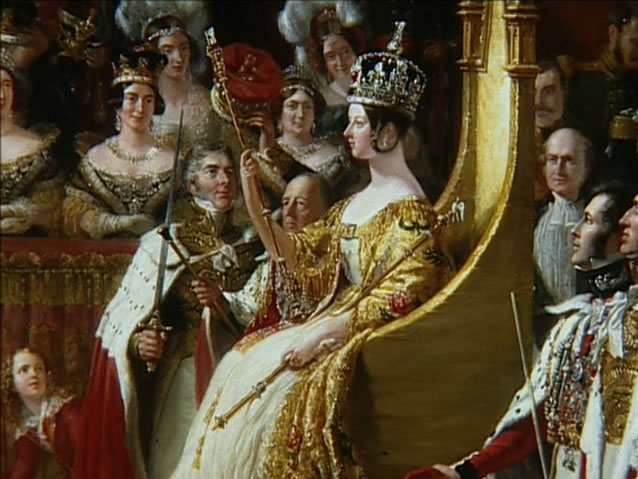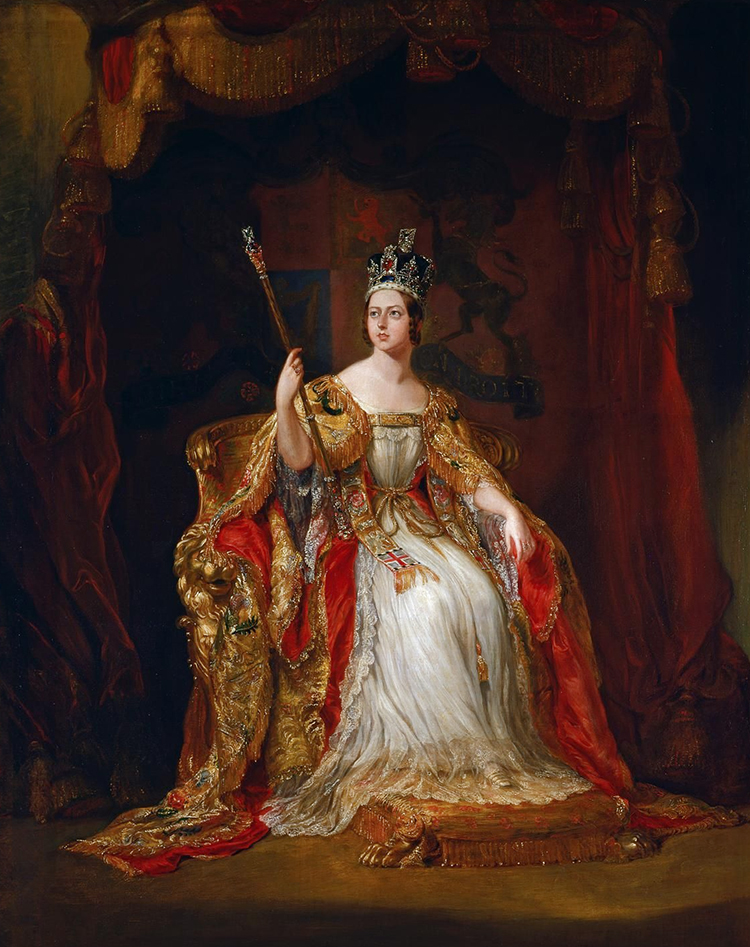
A Day of Splendour and Snafus
On the day of her coronation, Queen Victoria awoke to the sound of gunfire outside Buckingham Palace.

It was not the sound of an insurgent uprising or people’s revolt, however - it was celebratory gun shots announcing the arrival of the great day of Coronation.
Her lady-in-waiting, Lady Portman, would later recall how the young queen's hands trembled slightly as her elaborate white satin and silver embroidered dress was fastened. "I have come to reign, not to hide," Victoria reportedly whispered to herself—a private moment of steeling her resolve before facing a nation.
The City Celebrates
On 28 June 1838, the morning air in London buzzed with anticipation. The streets, draped in red, white and blue bunting, teemed with crowds gathered since dawn. This was no ordinary day—it was the coronation of a 19-year-old girl who would define an era: Queen Victoria.
What many don't realise is that Victoria nearly didn't make it to her own coronation. The night before, she had suffered a headache so excruciating that her private physician, Sir James Clark, feared that it might postpone the ceremony. But Victoria, displaying the iron will that would forever be her hallmark, refused any delay.
Westminster Abbey: Pageantry and Predicaments

Inside Westminster Abbey, the five-hour ceremony was anything but smooth. The officiating Bishop of Durham, clearly nervous, placed the coronation ring on the wrong finger, causing Victoria visible pain as she struggled to force it over her knuckle. The elderly Lord Rolle, attempting to pay homage, stumbled and rolled down the steps before the throne—a moment that could have been mortifying, but, ever graceful, Victoria rose from her throne and extended her hand to help him—a moment that charmed the entire court and cemented her reputation as a compassionate monarch.
The coronation orb, weighing nearly five pounds of solid gold, proved almost too heavy for Victoria's small frame. Yet she balanced it with remarkable poise, symbolically carrying the weight of an empire that stretched across a quarter of the globe.
As the crown was finally placed on Victoria’s head, a hush fell over the abbey, only to be followed by a thunderous “God Save the Queen.” It was a moment heavy with symbolism: the dawn of a reign that would define an era and a queen who would become the face of a global empire.
A Legacy is Born
What Victoria couldn't have known then was how profoundly she would transform the monarchy, her empire, and indeed the world. The uncertain young woman crowned that June day would reign for 63 more years, presiding over unprecedented industrial, cultural, political, scientific and military changes—a legacy that continues to shape our world today.

The Victorian era was a time of great industrial and technological advancement. The Industrial Revolution, which began in the late 18th century, continued to flourish under Queen Victoria's reign. Innovations such as the steam engine, the telegraph and the railway transformed society and the economy, leading to increased urbanisation and the growth of cities. These advancements laid the groundwork for the modern technological world.
Culturally, the Victorian era was a time of great literary and artistic achievement. Writers such as Charles Dickens, the Brontë sisters and Thomas Hardy produced works that remain classics of English literature. The Arts and Crafts Movement saw the flowering of the brilliance of Rossetti, Whistler, Burne-Jones and William Morris. The era Victoria presided over also saw advancements in science and exploration, with figures such as Charles Darwin and David Livingstone making significant contributions to their fields.
It's hard to believe that all these contributions to Britain and to the world began the day a 19-year-old girl chose to ignore a blinding headache and put on a dress to go to Westminster Abbey.



